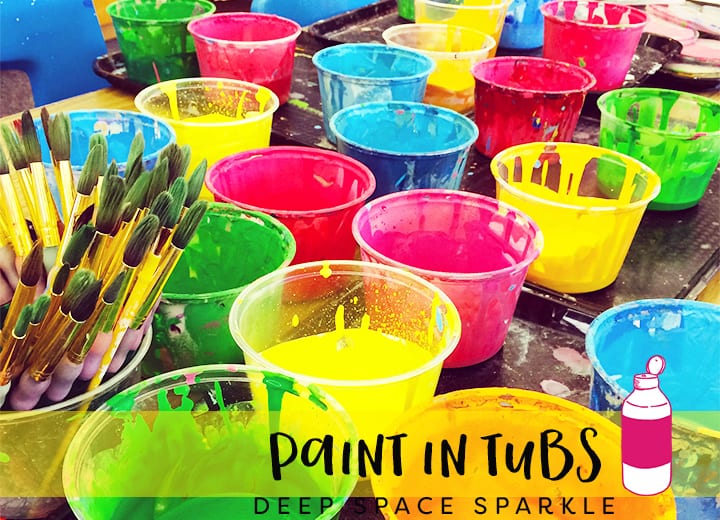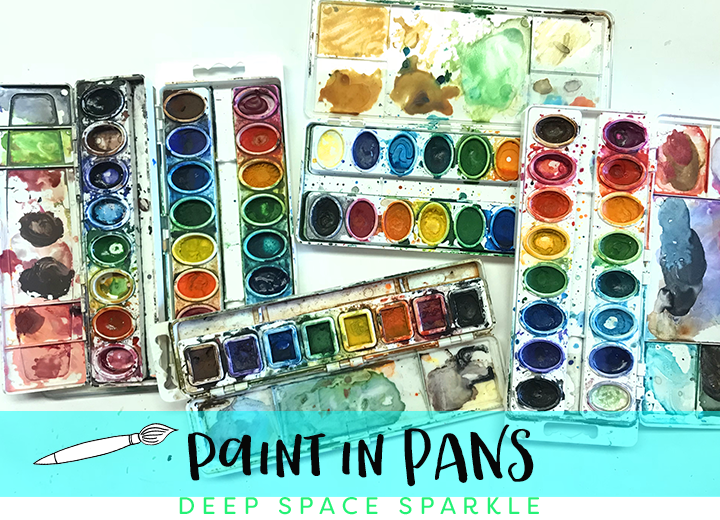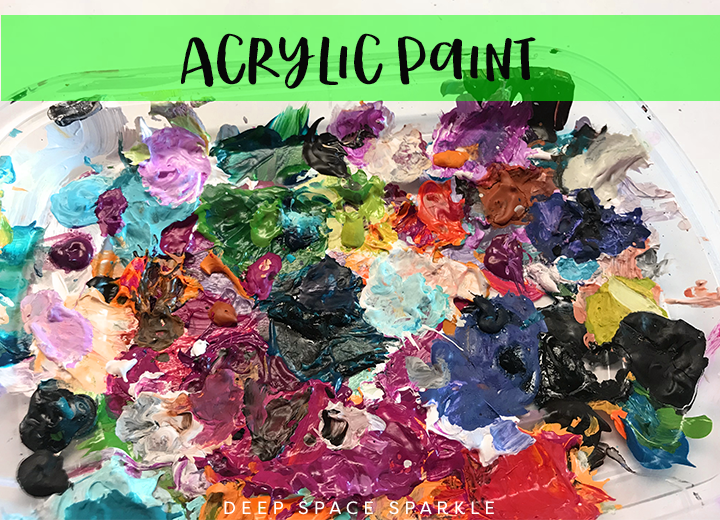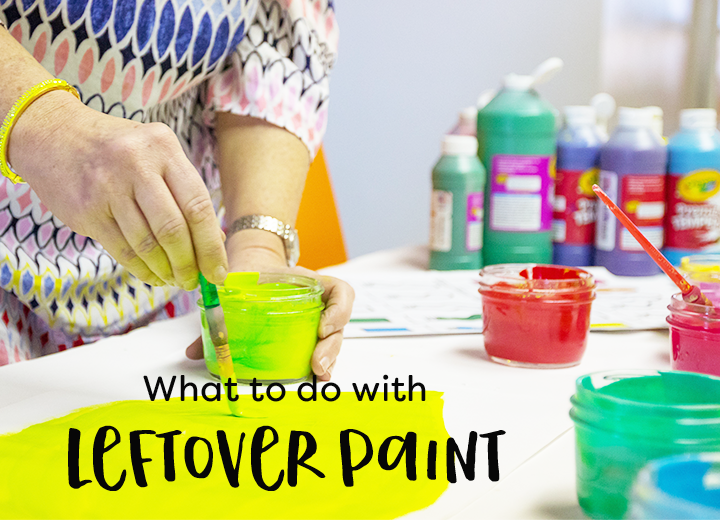It’s that time of year. Decision time.
Toss or save?
What to do with all that left-over paper, paint, broken crayons and bits of chalk pastel can contribute to massive overwhelm for most budget-conscience art teachers.
But not to worry. With just a small plan of action, you can turn your leftover paper and paint into the building blocks for next year’s stunning art projects.
In a recent Facebook Live, I shared my strategies for sorting through the end-of-year paper box (see video below) and today, I’m sharing strategies on what to do with the paints.
And trust me, the combination of these two is a beautiful thing.
What you might be dealing with…

If you have adopted the strategy of mixing colors into clear plastic food containers, by the end of the year, they will be ready to toss.
But before you toss any good paint, grab a stack of used placemats, old papers and anything you can get your hands on and start using up the paint.
Brush old leftover papers with a fresh coat of paint. There’s no need to be too precise. Your goal is to use up whatever paints you might have otherwise thrown away and cover perfectly usable paper. You can get fancy by adding a sprinkle of drippy white to add texture or add some texturing with sponges. The point is to create stacks of paper that will be ready for next year’s bounty of beautiful projects.
If the paint smells bad, you can still use it. Best apply the paint yourself and keep away from children–just in case of some intolerance to the smell.
Don’t forget about the tubs…
If the paint tubs are in good shape, you can keep these as well. Place the dirty tubs in a very large bucket. Fill with soapy water and allow to sit for a few hours.
Remove tubs and shake off excess paint. Put in a dishwasher or clean by hand.

If you are struggling with old watercolor pans, be thankful if you order the kind that has removable pods. If you didn’t, just chalk this up to a learning experience and make sure to buy replaceable pan sets next year.
Both Crayola and Prang offer replacement watercolor pods. It’s good to stock up on blue, red, yellow and green.
To clean the pans, simple remove the trays from the covers and soak in hot, soapy water. Then rinse under a tap, loosening up the extra bits with a medium stiff brush.
Lay flat on a towel to air dry.

Look familiar? I can’t tell you how many Chinese food container tops my daughter tossed before I showed her how to peel away the dry acrylic.
Yes…you can peel the paint away to reveal a perfectly good palette. And this way, the plastic acrylics won’t go down your drain.
Better yet, avoid palettes in the first place and use thick magazine sheets or tear-away sheet palettes.
HOW TO SORT YOUR PAPER BOX
PROJECTS THAT USE PAINTED PAPER













I always use copy paper wrappers as my paint palettes. They’re abundant and free, the bonus is the inside is a blank white surface and is also plasticized to keep out humidity when the copy paper is stored. It’s so easy at clean-up, folded to keep wet paint inside and placed into the recycle bin.
Wow…that’s brilliant! And we all have the wrappers, too. Thank you!
I wish you would do a quick video for my high school students who want to wash the acrylic paint down the drain. I’m K-12. We only use tempera in Elementary and I drive between the two schools. When they get to high school, paint use and clean up is a struggle.
I use ice cream bucket lids for my paint palettes. If I’m using tempera paint I put a paper towel down first and squirt out several colors of paint onto the paper towel. When it’s time to clean up you just throw out the paper towel and palette is ready to go. If paint is left over, I have student s use a larger paint brush (inexpensive 2″ house paint brush) to brush it on to 80 lb. white paper and use scrappers to make a pattern in the paint. The papers are stored on my drying rack for textured paper projects. Making the painted paper is sometimes more fun than doing the painting project!
I have never hear of using paper towel as a palette! You are genius!
Thank you, Patty! These are wonderfully helpful ideas that I’m eager to implement into my practice and routine. Just a quick question, please. Can you share a bit about the paper placemats which I’ve heard you mention from time to time – the type of paper, size, and any other tidbits about its use/application, please? Thanks so much!
Hi Lena, The paper placemats I use are 24″ x 18″ sulphite paper…so just a larger version of art paper. I place them under the kids art and throughout the year they get pretty marked up. I stack even the placemats that are wet. For some reason, they don’t stick (if what you mostly use is tempera). At the end of the year you can cut them up and use in art projects or as canvases. 🙂
Love, love, love your ideas! Thank you!
I’ve seen a good use for those acrylic blobs that end up on plastic lids after a class. They peel off easily when dry and can then be used for collage work. Students can even use them as flower petals, which of course, combines color, shape and best of all…texture.
Okay…that’s a genius tip. Thank you!
Hi! Was there a list of books somewhere? I can’t seem to find it. thanks so much!
amazing . i love art
Thanks! This is great! I used all of these to home school my and my friend’s children! Please do more painting tutorials!
– Peggy Guerra
amazing videos
Loved these ideas. So much better to use the paint up rather than wash them down the sink.